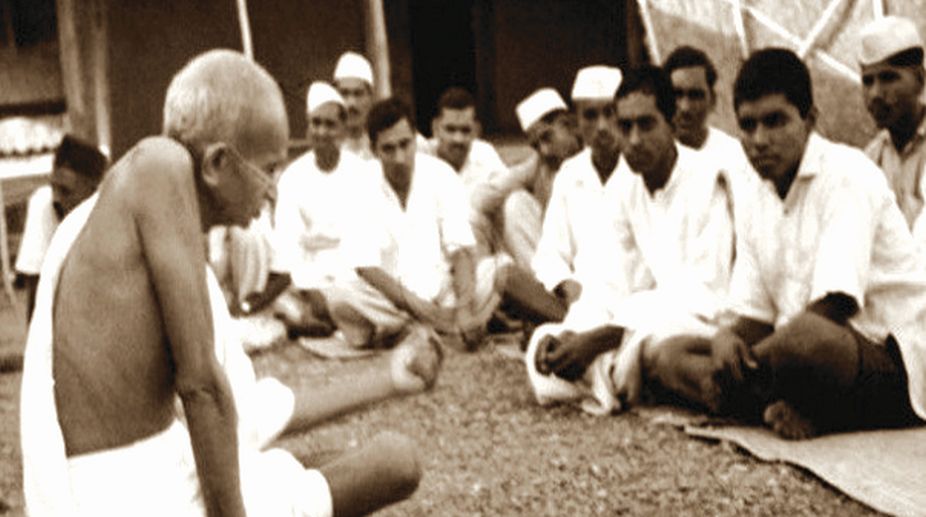Mahatma Gandhi was not merely a revolutionary, but also a practical idealist and visionary. Revolutionaries try to change or remove certain features from the existing; but as often as not, they often don’t have any alternate arrangement in place of the system that they are trying to reform.
As a result, revolutions sometimes either remain incomplete or their consequences are in total contrast to expectations. Gandhi, however, was an exceptional revolutionary. His achievements as a social reformer were embedded in his intuitive ability to fuse timeless principles with evolving strategies.
Advertisement
He realised that social evils not only plagued Indian society but also impeded the country’s march towards unity and Poorna Swaraj i.e. complete Independence, which does not signify political independence but rather economic and social independence. He did not depend on the state and its political agencies, but rather mobilised the social energies of the people.
The transformation of society, according to Gandhi, raises two important problems ~ the manner in which one set of social institutions and relations is to be gradually replaced by another, and the way in which contradictions and conflicts that would arise in the process are to be resolved. Gandhi’s solution to the first problem was the Constructive Programme (CP), the term that was coined by him. And the answer to the second was non-violent resistance (Satyagraha).
The Mahatma said: ‘In non-violence, destruction of the old order is through construction. The constructive programme may otherwise and more fittingly be called construction of Poorna Swaraj or complete Independence by “truthful and non-violent means”.
Gandhi’s Constructive Programme was not a passing thought, but the outcome of a well-planned and thoughtful agenda. It had evolved out of the knowledge the reality, garnered in course of his travels. He realised that “the soul of India lives in its villages”.
He believed that self-reliant villages formed a sound basis for a just, equitable and non-violent social order, which could ultimately be a guiding principle for all citizens, constructive workers and policy-makers. Over time, he visualised and developed an elaborate programme of constructive work, which included economic self-reliance, social equality and a decentralised political system. In the system that he visualised, the individual is at the centre and the village, and the group of villages would encompass each other in concentric circles.
In the structure composed of numerous villages, there will be ever-widening, never-ascending circles (‘Oceanic Circle’). Every individual represents an end itself, and the curtailment of freedom of an individual can lead to a qualitative deterioration of the freedom of the whole society. To such a concept of universal freedom, Gandhi gave the name of Sarvodaya (the rise of all), a Sanskrit expression that he used as the title of his Gujarati version of Ruskin’s Unto This Last.
The Constructive Programme, which Gandhi regarded as the positive aspect of his doctrine of Satyagraha or Non-cooperation, had been developed since 1922 when, after the withdrawal of the non-cooperation movement following the Chauri Chaura incident, he retired from active politics for about eight years and devoted himself to the organisation and implementation of constructive work, mainly based on khadi. He wrote on the subject in Young India and Harijan on constructive work. In December 1941, for the benefit of the members of the Congress, he first published a booklet titled Constructive Programme: Its Meaning and Place. He wrote: “My list does not pretend to be exhaustive; it is merely illustrative. The reader will see several new and improved additions”. However, in the following year Gandhi added one more item to it, namely the improvement of cattle, on the suggestion of one of his close associates.
The programme was geared to keep the workers of his movement in contact with the people. He realised that the freedom movement would fizzle out if such ties with the masses were snapped. In the Chinese Revolution, Mao Zedong accorded an important place to the service of the people and showed that mere revolutionary slogans and activities could not help organise and rally people. Real growth could be achieved only if the people could be prepared for a struggle through constructive work. The range and depth of the programme of mass contact was almost incredible.
The items included in Gandhi’s Constructive Programme were not arranged in order of importance. He did not follow a particular pattern but tried to touch several spheres ~ economic, political and social. He sought to uplift the whole of society, while encouraging self -sufficiency in terms of sectors and regions. The programme was influenced by the concept of trusteeship which could sustain both a narrower economic interpretation and a broader social application. If labour is as much social capital as metal, everyone capable of working should consider himself or herself an ethical trustee, even if one’s own sphere of action is no longer larger than the village or the home.
Gandhi strove throughout his life to bring about communal harmony. To him, ‘communal unity does not mean political unity which may be imposed. It means an unbreakable heart unity’. He wanted workers to cultivate personal contacts and friendship with people of different faiths other than his own, and to have the same respect for their faith as for his own. Gandhi viewed untouchability as a blot and curse upon Hinduism. To remove the taint of untouchability from the Hindu society he started the Harijan newspaper and also founded the Harijan Sevak Sangh. The Constructive Programme emphasised that every caste Hindu should befriend ‘untouchables’ and break their awful isolation ~ “Such isolation is perhaps of the kind that the world has never seen in the monstrous immensity one witnesses in India”.
The emancipation of women was integral to his Constructive Programme. He was convinced that the movement would not succeed without the active participation of women. He wanted to give women equal status as of men. The CP stressed upon the improvement of village sanitation which was practically non-existent in India. Education on health and hygiene formed a separate category within the programme. He suggested the development of provincial languages and the blending of Hindi with Urdu, and thus recommended Hindustani as the national language.
On 29 January 1948, the day before his assassination, Gandhi drafted a proposal for the dissolution of the Congress and formation of Lok Sevak Sangh to serve the people. He wrote: “Congress has won political freedom, but it has not yet won economic freedom, social and moral freedom. These freedoms are harder to attain than the political.” The All-India Congress Committee did not accept his proposal. The Indian National Congress did not disband itself. Gandhi was killed before he could take his next step.
Gandhi attempted to radically reorient India physically, psychologically, socially, economically, politically and spiritually through his Constructive Programme. But even after more than seven decades of Independence, we are yet to remove untouchability, commercialisation of education and the craze for foreign language. This has widened the gap between the educated class and the masses. Gandhi crafted his agenda in the context of the prevalent situation in the country.Instead of being antediluvian and utopian, the agenda is very much relevant to our times. Gandhi was indeed a prophetic figure and a great leader. Romain Rolland described his spirit as ‘the perfect manifestation of the principle of life which will lead a new humanity on to a new path.’
The writer is a retired IAS officer.











